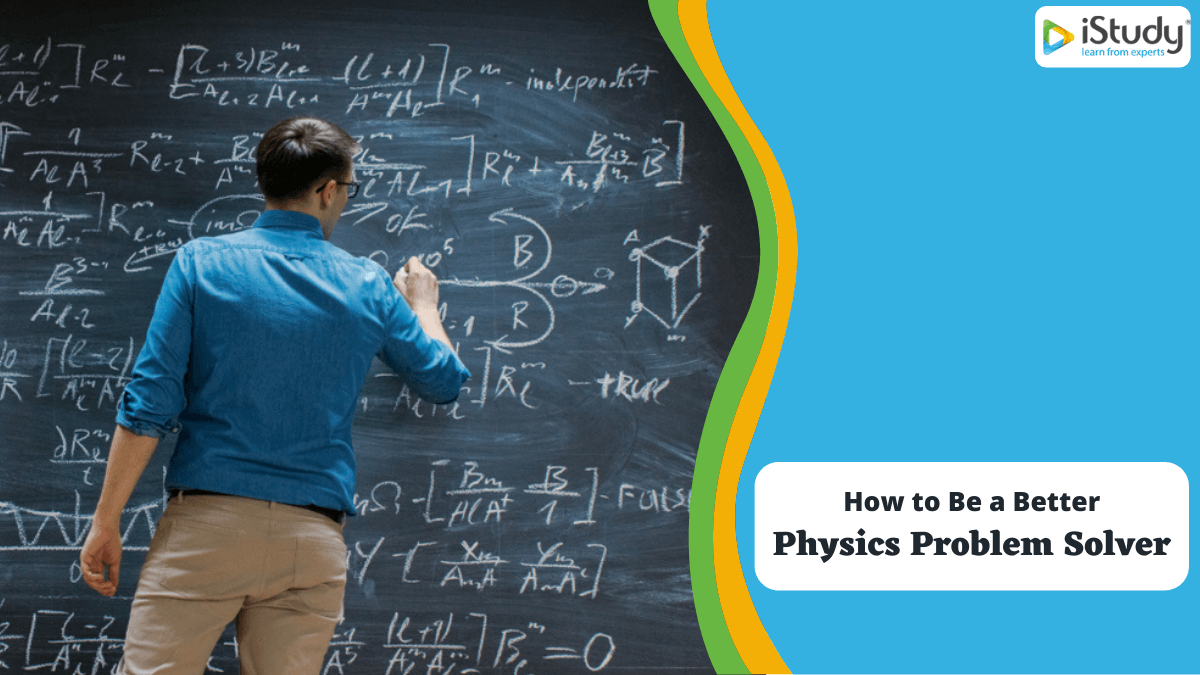
Let’s face the truth – physics is the discipline that tends to scare students before they even get their hands on the course. Their fear appears when they deal with the basics of the course and continues to grow when they proceed to the materials of the higher level. The difference is that only those students who are passionate about the discipline tend to like the idea of dealing with both the basics and the higher-level stuff. When it comes to a problem in the field of physics, it is usually the type of question that you don’t know how to find the right answer for at the moment.
12 Tips for High School and College Students
No matter how difficult this or that problem may seem, you have to keep in mind that solving problems in the field of physics is something that one can learn. If you have not the slightest idea of where to start working on your physics problem, you have to keep in mind that there are some logical and simple techniques that may help you solve any problem in the discipline.
1. Calm down.
No matter how tough the issues may seem, you have to remember that it is just a problem, not a global tragedy. Just like you, loads of students all over the globe find them stuck with this or that matter in the field of physics. If they can make it, so can you.
2. Make sure you know the nature of the problem.
Identifying the problem you’re dealing with is the first step that you have to take on your way to solving it. Identify the problem and its nature. You can do that by visualizing some physical condition, as well as transforming the written information on the problem under study into math variables. We recommend drawing a detailed diagram that comprises the issues, their interactions, and how they interchange.
3. Read the question several times.
Do it carefully in order to understand the physical issue you’re dealing with, and what sub-subject the problem goes from (or several sub-subjects). Now, make sure to re-read the question to ensure you’re clear about what exactly you’re supposed to solve. Let’s say, you’re interested in acoustics and building things. Chances are you’re required to explore the so-called frequency-dependent sound absorption. Check the questions to find out that your task is to discover if sound absorption by various materials changes with the frequency of sound. This will help you get a better understanding of what strategy you will have to use in the process. In other words, at this point, you will have to know what they expect from you
4. Identify the key elements of the problem.
If you read your question carefully, you can easily define the main elements of the issue under study. Use a diagram to pin all of the details that you know or don’t know. Thus, you will be able to quickly switch between visual, mathematical, and verbal modes, as well as their concrete appearances in the forms of equations, images, and words.
5. Organize the information.
The field of physics is confusing mainly because every other issue in it hides the actual variables. More often than not, college students are given some extra details that they don’t really need to solve the physics problem. Moreover, there might also be variables whose purpose you get to know only at the next stage of your work. Make sure to organize all the details that are available at the moment. Thus, you will be able to see all the variables clearly and find the most suitable equation as a result.
6. Draw a picture.
In the world of physics, sketching the scene can really help you with your physics problems. For instance, getting a visual idea of the difference between negative and positive acceleration can help you see the difference between the wrong and the right answer. No need to think that you have to be Salvador Dali or Pablo Picasso to cope with this stage. All you have to do is to sketch a rough scheme that best expresses the situation. When it comes to the issues in the field of physics, arrows should be used here and there since they demonstrate what direction the object under study is moving. Use them in order to organize all the pieces of information properly.
7. Consider possible solutions.
If you’re done with the diagramming and visualizing of the physical problem, it is the right time to either use your background knowledge of the niche or look for all necessary details in college textbooks, notes, online and printed resources.
8. Choose the right formula.
Without a doubt, you’re going to find yourself in situations, when several formulae can be used for the same range of variables. At this point, college students are usually pretty confused as to which formula should be used. That is why when you’re trying to remember the set of formulae, it is important that you also memorize the conditions where these formulae are applied. For instance, you can use the formula “v = u + at” only when you know that the acceleration is constant. In other words, in case the acceleration isn’t constant, the equation we have just mentioned shouldn’t be used.
9. Solve your problem.
Now, you have your diagrams, sketches, variables, formulae at hand, you have the idea of what is actually going on – it’s time to get the right answer! You have to be prepared that you may have a pretty lengthy equation to handle at the end. Make sure to keep your goal in mind. Ensure to keep checking your list of variables to see which one you’re actually missing. That’s the one that you’re going to find a solution for.
10. Verify your results.
A lot of college and university students tend to skip this part. They believe that they did a great job, so nothing can go wrong at this point. However, that is a huge mistake. Verifying results can take no more than a minute, but this can make the difference between A+ and C, and sometimes worse. What is it all about? For example, in case the answer that a student got for the velocity of her car exceeds the speed of light, she is definitely wrong. In case the units of acceleration turn out to be far from the right distance/time^2 units, the student is likely wrong. It is important to read the task and the instructions attentively to be able to verify your results properly.
11. Practice a lot.
Without a doubt, your college professor has already told you to. This may sound obvious, but the reality is that many undergrads tend to forget this simple truth. Every student would like to be able to find the right solutions for the physics problems as fast as possible, but they forget that they have to practice to get the best results. The more questions you solve, the more experience you have as a result. All of the mistakes that you make in the process will serve to not only boost your skills in physics but also teach you to find the most unexpected solutions. The more your practice, the less time it will take you eventually to find the best ways to solve this or that problem in the field of physics. It is all about the experience.
12. Search for help.
Let’s face it – you can’t know everything. For that reason, in case you are stuck in the middle of your physics journey, do not waste your precious time! Look for professional help either from your college professors or from online tutors. Once you find a reliable physics problem solver, you will have a chance to get more advice on how to handle the toughest physics questions. Online experts are patient, skillful, and knowledgeable in the field of physics. They know how to put in plain words the most difficult concepts of the field to make sure that students understand them.
Just like most science disciplines, physics can seem too tough sometimes. Getting to know the issue about our world is not always intuitive. In other words, sometimes you will have to apply conceptual and mathematical skills of an advanced level. After all, when you face any physics problem on your academic path, we recommend recalling what a world-famous Steve Jobs once said, “When you start looking at a problem and it seems really simple with all these solutions you don’t really understand the complexity of the problem. And your solutions are way too simplified and they don’t work. Then you get to the problem and you see it’s really complicated, and you come up with all these convoluted solutions. That’s sort of the middle and that’s where most people stop and the solutions work for a while, but the really great person will keep going and find the key, underlying principle of the problem, and come up with a solution that works.”
Creative Problem Solving Certificate Course
- All Courses
- Technology64
- Business269
- Language50
- Marketing127
- Photography22
- Software55
- Security Guard2
- Coaching5
- Maintenance Management23
- Bundle6
- Ex Deal54
- Business,Personal Development3
- Networking & Design6
- IT29
- Health & Safety91
- Cooking9
- Physical & Mental Health21
- Treatment9
- Photoshop3
- Child care23
- Parenting1
- Leadership & Management1
- Fast Track210
- Teaching & Education9
- International Relations2
- Philosophy1
- Office Skills2
- Health & Fitness2
- Health and Care17
- Law2
- Animal Care12
- Accounting & Finance6
- IT & Software4
- Management234
- Microsoft Office134
- Design68
- Travel and Tourism8
- Beauty20
- Accounting42
- Employability250
- Sports, Nutrition & Fitness200
- HR and Leadership58
- Personal Development479
- Autism2
- Customer Service6
- Nursing & Care82
- Lifestyle22
- Teacher Training28
- Project management3
- Mathematics7
- Counselling and Therapy52
- Psychology28
- Pharmacy5
- Animal1
- Development10
- Arts & Crafts19




7 responses on "How to Be a Better Physics Problem Solver: Tips for High School and College Students"